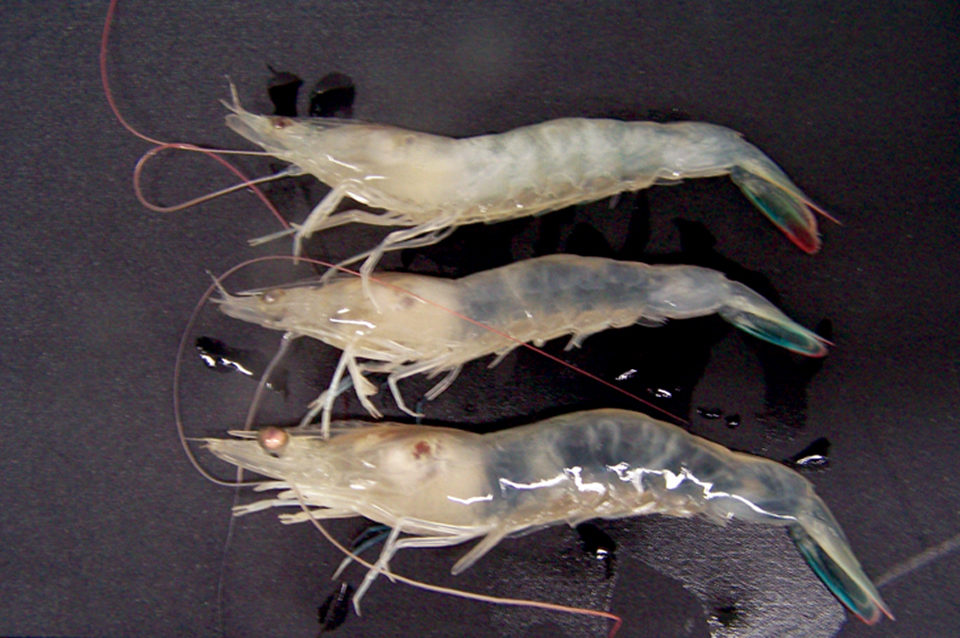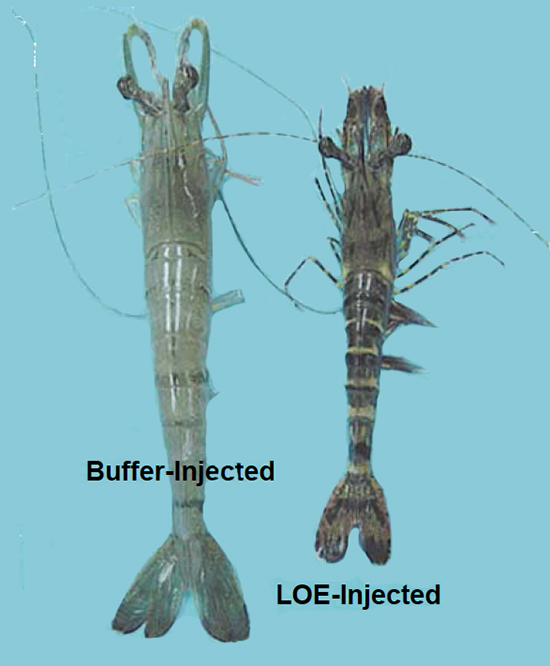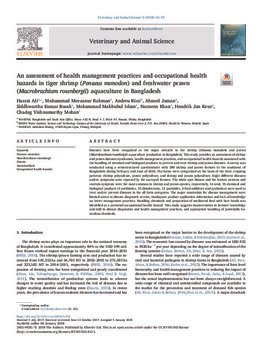Tiger shrimp face health problems such as viral infections and bacterial diseases. These issues can significantly impact shrimp farming operations.
Tiger shrimp, a popular choice in aquaculture, are prone to various health challenges. Viral infections like White Spot Syndrome Virus (WSSV) and Yellow Head Virus (YHV) are common threats. Bacterial diseases, particularly those caused by Vibrio species, also pose significant risks.
Effective management and preventive measures are crucial to maintaining shrimp health. Good water quality, proper nutrition, and regular health monitoring help mitigate these problems. Farmers must stay informed about the latest disease management practices. Addressing health issues promptly ensures a sustainable and profitable shrimp farming operation.
Common Health Issues
Tiger shrimp are popular in aquaculture, but they face health challenges. Understanding these common health issues helps in maintaining healthy shrimp populations.
Bacterial Infections
Bacterial infections are one of the major health problems in tiger shrimp. These infections can spread rapidly in crowded conditions.
Common symptoms include:
- Red or black spots on the shell
- Soft or discolored shells
- Loss of appetite
Managing bacterial infections involves maintaining clean water and using antibiotics when necessary.
Parasitic Infestations
Parasitic infestations can also affect tiger shrimp. Parasites can damage the shrimp’s body and internal organs.
Signs of parasitic infestations include:
- Visible parasites on the shell
- Sluggish movement
- Reduced growth rates
Preventing parasitic infestations requires regular monitoring and quarantine of new shrimp.
Fungal Diseases
Fungal diseases are another common issue in tiger shrimp. Fungi thrive in poor water conditions.
Symptoms of fungal diseases:
- White or gray patches on the shell
- Deformed shells
- Increased mortality rates
Controlling fungal diseases involves improving water quality and using antifungal treatments.
| Health Issue | Common Symptoms | Prevention/Treatment |
|---|---|---|
| Bacterial Infections | Red/black spots, soft shells, loss of appetite | Clean water, antibiotics |
| Parasitic Infestations | Visible parasites, sluggish movement, reduced growth | Monitoring, quarantine |
| Fungal Diseases | White/gray patches, deformed shells, high mortality | Water quality, antifungal treatments |

Credit: www.globalseafood.org
Recognizing Symptoms
Understanding the health of tiger shrimp is crucial for successful aquaculture. Recognizing symptoms early can prevent significant losses. This section explores the signs to watch for in your shrimp population.
Behavioral Changes
Behavioral changes are often the first indicators of health problems. Look for the following symptoms:
- Reduced Activity: Healthy shrimp are active. Sick shrimp move less.
- Erratic Swimming: Sudden, unpredictable movements can signal stress.
- Surface Swimming: Shrimp usually stay at the bottom. Surface swimming suggests trouble.
Physical Signs
Physical signs are visible indicators of health issues. Check for these symptoms:
- Discoloration: Healthy shrimp are bright. Pale or dark shrimp may be ill.
- Shell Deformities: Look for soft or cracked shells. This may indicate disease.
- Lesions or Spots: Visible wounds or spots can be a sign of infection.
- Growth Inhibition: Healthy shrimp grow steadily. Stunted growth is a red flag.
Water Quality Indicators
Water quality greatly affects shrimp health. Monitor these indicators:
| Parameter | Optimal Range |
|---|---|
| Temperature | 26-30°C |
| pH Level | 7.5-8.5 |
| Ammonia | 0 ppm |
| Nitrite | 0 ppm |
| Nitrate | < 20 ppm |
Maintaining optimal water quality is essential. Poor water conditions can cause stress and disease.
Preventive Measures
Preventing health problems in tiger shrimp is essential for a successful aquaculture operation. Following specific preventive measures can help maintain a healthy shrimp population. Here are some key strategies to ensure tiger shrimp well-being.
Water Quality Management
Maintaining good water quality is crucial for shrimp health. Regularly monitor pH levels, temperature, and salinity. Ensure oxygen levels are sufficient. Use proper filtration systems to remove harmful substances.
Here is a simple table for optimal water parameters:
| Parameter | Optimal Range |
|---|---|
| pH | 7.5 – 8.5 |
| Temperature | 25°C – 30°C |
| Salinity | 15 – 25 ppt |
| Oxygen Levels | 5 – 7 mg/L |
Proper Nutrition
Provide a balanced diet to your tiger shrimp. Ensure they receive adequate protein, lipids, and carbohydrates. Include vitamins and minerals in their diet. Avoid overfeeding to prevent water pollution.
- Use high-quality commercial feed.
- Supplement with fresh, natural food.
- Monitor feeding habits and adjust portions accordingly.
Quarantine Practices
Implement effective quarantine practices to prevent the spread of diseases. Isolate new shrimp arrivals for at least 2 weeks. Observe them for any signs of illness.
- Set up a separate quarantine tank.
- Ensure the quarantine tank meets optimal water quality standards.
- Regularly check the health status of quarantined shrimp.
Keep existing shrimp safe by following these quarantine measures. This ensures the overall health of your shrimp population.

Credit: www.skretting.com
Hygiene Practices
Maintaining proper hygiene in your shrimp tank is crucial. It helps prevent health problems in tiger shrimp. Below are some effective hygiene practices to ensure a healthy environment for your shrimp.
Tank Cleaning Protocols
Regular cleaning of the tank is essential. Follow these steps to clean your tank effectively:
- Remove any uneaten food and waste daily.
- Perform a partial water change every week. Replace 10-20% of the water.
- Use a siphon to clean the substrate. This removes debris and waste.
- Scrub the tank walls with a sponge. This removes algae and dirt.
Disinfection Methods
Disinfection helps kill harmful bacteria and parasites. Use these methods to disinfect your tank:
- Bleach Solution: Prepare a 1:10 bleach solution. Soak equipment for 10 minutes. Rinse thoroughly with water.
- UV Sterilizers: Install UV sterilizers in your tank. They kill pathogens in the water.
- Potassium Permanganate: Use this chemical to disinfect the tank. Follow the dosage instructions carefully.
Equipment Maintenance
Regular maintenance of equipment ensures a healthy tank environment. Follow these tips:
| Equipment | Maintenance Tips |
|---|---|
| Filters | Clean filters monthly. Replace filter media as needed. |
| Heaters | Check heaters for proper functioning. Clean any debris around them. |
| Air Pumps | Inspect air pumps weekly. Ensure they are providing adequate air. |
Following these hygiene practices helps keep your tiger shrimp healthy. Regular cleaning, disinfection, and equipment maintenance are key.
Feeding Strategies
Maintaining the health of tiger shrimp requires effective feeding strategies. These strategies help ensure the shrimp receive the right nutrients, avoid overfeeding, and maintain a balanced diet.
Balanced Diets
A balanced diet is crucial for tiger shrimp health. Ensure the shrimp receive proteins, fats, and carbohydrates. Include algae, plant matter, and animal proteins.
- Proteins: Essential for growth and muscle development.
- Fats: Provide energy and support cell structure.
- Carbohydrates: Offer quick energy sources.
Supplementing Nutrients
Sometimes, a standard diet isn’t enough. Supplementing nutrients ensures the shrimp get everything they need.
| Supplement | Benefit |
|---|---|
| Vitamins | Boosts immune system and overall health. |
| Minerals | Supports shell development and metabolic functions. |
| Amino Acids | Enhances growth and tissue repair. |
Avoiding Overfeeding
Overfeeding can lead to health issues. It can pollute the tank and cause stress.
- Feed in small portions.
- Remove uneaten food after an hour.
- Observe shrimp’s behavior and adjust feeding accordingly.
Following these steps helps maintain a clean and healthy environment for tiger shrimp.
Environmental Controls
Tiger shrimp need a healthy environment to grow well. Proper controls can prevent many health problems. The following sections cover key environmental factors.
Temperature Regulation
Temperature affects shrimp health greatly. Optimal temperature ranges from 26°C to 30°C.
Extreme temperatures cause stress and disease. Use heaters or coolers to maintain stable conditions.
| Temperature | Effect on Shrimp |
|---|---|
| Below 24°C | Slow growth, increased disease |
| 26°C – 30°C | Optimal growth and health |
| Above 32°C | High stress, potential death |
Salinity Levels
Salinity is the salt level in water. Ideal salinity for tiger shrimp is 15 to 25 ppt.
Monitor salinity with a refractometer. Too high or too low salinity harms shrimp.
- Low salinity (<15 ppt): Affects osmotic balance
- High salinity (>25 ppt): Causes dehydration
Ph Balance
pH balance is crucial for shrimp health. Maintain pH between 7.5 and 8.5.
Use pH meters for accurate readings. Unbalanced pH leads to stress and disease.
- pH below 7.5: Acidic conditions, stress
- pH above 8.5: Alkaline conditions, stress
Monitoring And Testing
Monitoring and testing are vital for ensuring tiger shrimp health. Regular checks help detect issues early, preventing severe outbreaks. Below are key practices for effective monitoring and testing.
Regular Health Checks
Conduct regular health checks on your tiger shrimp. Inspect them for any physical abnormalities. Look for signs like discoloration, unusual spots, or damaged shells. Use a magnifying glass for a closer examination.
Maintain a log of your observations. Record any changes in appearance or behavior. This helps track patterns and identify recurring issues.
Water Quality Testing
Testing water quality is crucial. Poor water quality leads to health problems. Regularly test for:
- pH levels
- Ammonia
- Nitrite
- Nitrate
- Salinity
- Dissolved oxygen
Use a reliable water testing kit. Record the results in a logbook. Adjust water parameters based on test results. This ensures a healthy environment for your shrimp.
Disease Screening
Screen for diseases regularly. Common diseases include:
- White Spot Syndrome Virus (WSSV)
- Yellow Head Virus (YHV)
- Early Mortality Syndrome (EMS)
Use PCR (Polymerase Chain Reaction) tests for accurate results. Early detection helps in taking prompt action. Quarantine affected shrimp to prevent the spread of diseases.
| Parameter | Ideal Range |
|---|---|
| pH Levels | 7.5 – 8.5 |
| Ammonia | <0.1 ppm |
| Nitrite | <0.1 ppm |
| Nitrate | <20 ppm |
| Salinity | 30-35 ppt |
| Dissolved Oxygen | >5 ppm |

Credit: www.globalseafood.org
Emergency Response
Dealing with tiger shrimp health problems requires a quick response. An immediate action plan can save your shrimp population. Here’s how to handle an emergency effectively.
Isolation Procedures
First, isolate affected shrimp to prevent the spread of disease. Use a separate tank or container. Ensure the isolation area has similar water conditions. This helps reduce stress on the shrimp.
Monitor the isolated shrimp closely. Look for signs of improvement or worsening. Keep detailed records of their condition.
Treatment Options
Once isolated, consider treatment options. Common treatments include:
- Salt Baths: Use a 2% salt solution for 10-15 minutes.
- Antibiotics: Follow a vet’s advice for correct dosage.
- Medicinal Baths: Use commercial shrimp medications as directed.
Always follow the recommended dosages and methods. Improper treatment can harm the shrimp further.
Consulting Experts
If unsure, consult a shrimp health expert. Experts can diagnose diseases accurately. They provide the best treatment plans.
Contacting a local vet or a marine biologist can be beneficial. They have specialized knowledge in shrimp health problems.
Keep their contact information handy. Quick communication can save your shrimp during an emergency.
Frequently Asked Questions
What Are The Negative Effects Of Tiger Shrimp?
Tiger shrimp can harm local ecosystems by outcompeting native species. They may also spread diseases and parasites to other marine life.
Are Tiger Shrimp Healthy?
Yes, tiger shrimp are healthy. They are high in protein, low in calories, and rich in omega-3 fatty acids.
What Is The Disease In Tiger Prawns?
Tiger prawns can suffer from diseases like White Spot Syndrome Virus (WSSV) and Yellow Head Virus (YHV). These diseases are viral and highly contagious, affecting the prawn’s health and production. Regular monitoring and proper aquaculture practices help prevent outbreaks.
What Is The Lifespan Of A Tiger Shrimp?
Tiger shrimp typically live for 1. 5 to 2 years. Proper care and environment can extend their lifespan.
Conclusion
Tiger shrimp health problems can be managed with proper care and attention. Regular monitoring ensures early detection of diseases. Maintaining clean water and appropriate nutrition is crucial. By following these steps, you can promote a healthy environment for your tiger shrimp.
Prioritize their well-being for a thriving and vibrant shrimp population.
